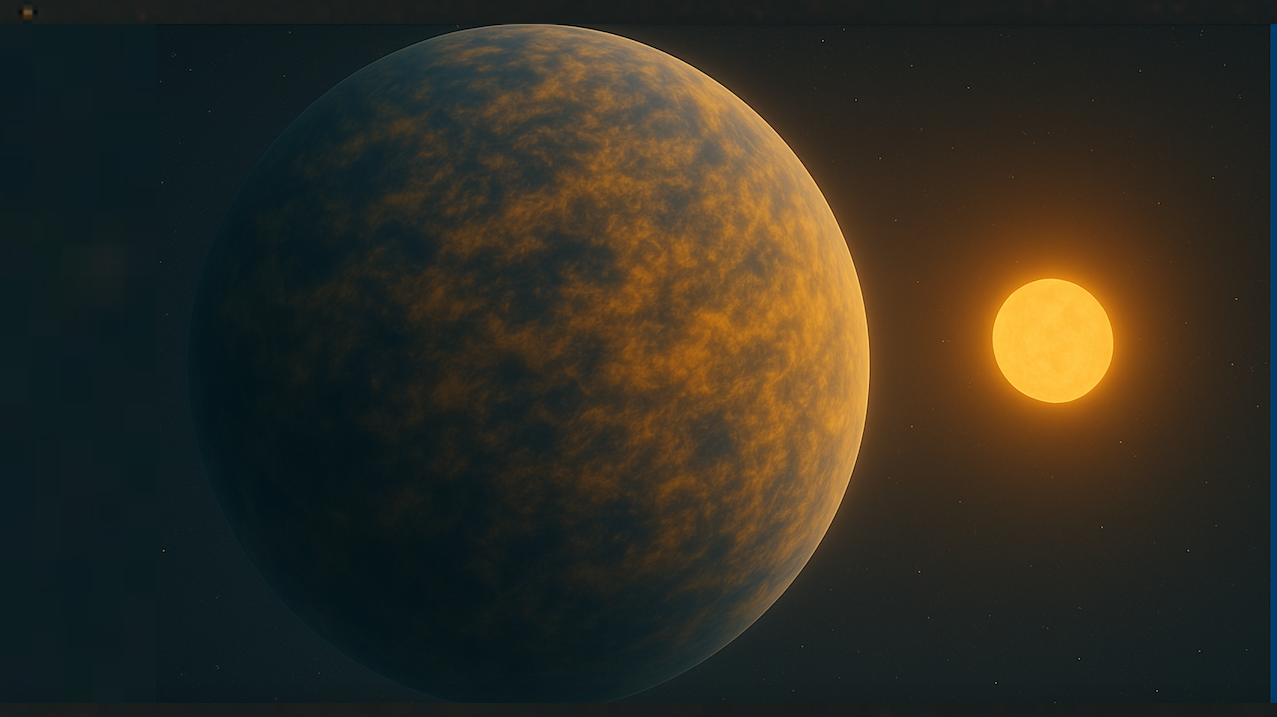Now Reading: James Webb Space Telescope takes 1st look at interstellar comet 3I/ATLAS with unexpected results
-
01
James Webb Space Telescope takes 1st look at interstellar comet 3I/ATLAS with unexpected results
James Webb Space Telescope takes 1st look at interstellar comet 3I/ATLAS with unexpected results

The James Webb Space Telescope (JWST) has observed the interstellar visitor 3I/ATLAS for the first time. The powerful space telescope trained its infrared vision and its Near-Infrared Spectrograph instrument (NIRspec) on the comet on Aug. 6, 2025.
Discovered on July 1 by the ATLAS (Asteroid Terrestrial-impact Last Alert System) survey telescope, 3I/ATLAS is just the third-ever object found drifting through our solar system that is believed to have originated from around another star. The other two interstellar intruders were 1I/’Oumuamua, discovered in 2017, and 2I/Borisov, detected in 2019.
The JWST follows in the footsteps of the Hubble Space Telescope and the SPHEREx Observatory, both of which have already observed 3I/ATLAS as it passes through the solar system. This investigation aims to uncover characteristics of 3I/ATLAS, including its size, physical properties, and, importantly, its chemical makeup.
In a preprint paper describing their investigation of 3I/ATLAS, a team of astronomers that observed the comet with the JWST explains that studying comets like this from other star systems helps to study what conditions were like in those systems as they were forming. Those results can then be compared to what scientists have learned about the conditions around the sun 4.6 billion years ago, when the planets, asteroids, and comets of the solar system were forming.
When comets approach the sun and are warmed by its heat, frozen materials within them are transformed from solids straight into gases. This results in gases escaping, a process called “outgassing,” creating the characteristic tail and halo, or “coma,” of a comet.
As expected, 3I/ATLAS is outgassing as it approaches the sun, and astronomers have used the JWST and its NIRSpec instrument to identify carbon dioxide, water, water ice, carbon monoxide, and the smelly gas carbonyl sulfide in its coma.
What wasn’t expected, however, was the highest ratio of carbon dioxide to water ever observed in a comet. This could reveal more about the conditions in which 3I/ATLAS formed.

The abundance of carbon dioxide in the coma of 3I/ATLAS could indicate that the interstellar comet has a heart that is intrinsically rich in carbon dioxide. This could imply that the comet contains ices that were exposed to much higher levels of radiation than comets in the solar system have been exposed to.
Alternatively, the team suggests this high carbon dioxide content could indicate that 3I/ATLAS may have formed in a specific site called the “carbon dioxide ice line” within the swirling cloud of matter, or “protoplanetary disk,” that surrounded its stellar parent. This is defined as the point at which the temperature around an infant star or “protostar” falls low enough to allow carbon dioxide to change from a gas to a solid.
Furthermore, the low abundance of water vapor in the coma of 3I/ATLAS could indicate that there is something within the comet that is inhibiting heat from penetrating the icy core of the comet. This would hinder the amount of water transforming from ice into gas relative to the transformation rate of carbon dioxide and carbon monoxide.
Related Stories:
These new findings build upon the wealth of fascinating data being collected about 3I/ATLAS. This includes the previous discovery that the interstellar comet could actually be around 7 billion years old, meaning it is the oldest comet ever seen and around 3 billion years older than the solar system.
The team behind that prior research on the comet came to this conclusion when they examined the steep trajectory of 3I/ATLAS through the solar system. This indicated that it comes from the Milky Way’s “thick disk” of stars, a region of our galaxy much more ancient than the “thin disk” within which the sun was born.
One thing is certain: the study of 3I/ATLAS will continue until the comet returns to interstellar space with considerably fewer secrets than it carried into the solar system. And the JWST is set to be heavily involved in the unraveling of this mystery.
Stay Informed With the Latest & Most Important News
Previous Post
Next Post
-
 012024 in Review: Highlights from NASA in Silicon Valley
012024 in Review: Highlights from NASA in Silicon Valley -
 02Panasonic Leica Summilux DG 15mm f/1.7 ASPH review
02Panasonic Leica Summilux DG 15mm f/1.7 ASPH review -
 03How New NASA, India Earth Satellite NISAR Will See Earth
03How New NASA, India Earth Satellite NISAR Will See Earth -
 04And Thus Begins A New Year For Life On Earth
04And Thus Begins A New Year For Life On Earth -
 05Astronomy Activation Ambassadors: A New Era
05Astronomy Activation Ambassadors: A New Era -
06SpaceX launch surge helps set new global launch record in 2024
-
 07Space Force plans new ‘Futures Command’ amid pressure to speed up modernization
07Space Force plans new ‘Futures Command’ amid pressure to speed up modernization




















